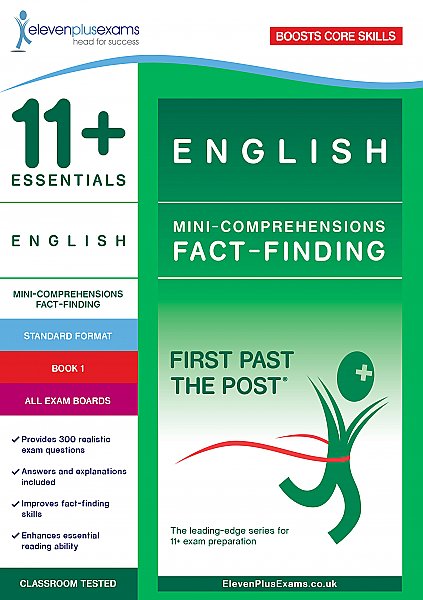11+ Comprehension Exercises
The content and difficulty level of 11+ English comprehension exercises can vary considerably. Although every child will have done comprehension work at school, in the 11 Plus they are working in a strictly time-limited environment which they have not always encountered before. Those two factors can combine to make the comprehension exercise more challenging than it might first appear to be.
The text used for the comprehension may be factual or fiction, and in some areas (notably Essex) extracts from classic texts – Dickens, Hardy, Orwell – are used. These may contain language that children have rarely encountered before. Once again, it is essential that your child has read at least a few books from previous eras. “A Christmas Carol” by Charles Dickens is a particularly good starting point as many children are already familiar with the storyline, and it is a short book that will not intimidate them.
In some 11+ regions the text will not be by a published author, just a story or piece of information created specifically for the test. These are some tips for improving comprehension work:
- The exercise may have sub-headings within the text, and these are the first key to speed in comprehension. Children tend to ignore headings and move straight to the text. Teach your child to read the sub-heading and absorb it, because often it will help them to navigate back to the relevant information required for an individual question.
- Children should read the entire text thoroughly and steadily, but also reasonably quickly.
- Some children find it helpful to write one or two words in the margin next to each paragraph just to remind themselves of the key points being made. Thus, a text which discusses the habitats of lions, giraffes and hippos might be marked up in the margin with the name of one of the animals to make it easier to find the relevant section while answering the questions. Be careful not to allow this technique to slow your child down though!
- Some teachers recommend that key words or difficult words should be underlined, but this can be a slow process, and the child has no way of knowing what the key words are until they have seen the questions. The technique should be used very sparingly in the time-limited environment of the 11+.
- Once the child has read through the text once, they should move straight on to the questions, and not waste time re-reading it in the hope of absorbing more information.
- While answering the questions the child should check the text and not rely upon their memory. Comprehension exercises often have similar phrases or facts included in them which can lead a child to trip up if they try to answer from memory.
- Revise words such as ‘metaphor’ and ‘simile’ and make sure your child knows the difference between them, because the questions might ask them to find a word that is a metaphor for another.
The Golden Rule for success in comprehension exercises is the answer is always in the text! You may need to look carefully, but you will find that whether it is a multiple choice exam or not, the wording in the question always refers to some part of the text.









